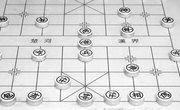A classroom white board is never large enough for all possible uses, but dividing it with lines that stay in place all year can help you better allocate the space. Check with your principal before making any changes to the white board, and avoid any methods that might damage the surface. Plan out your lines before starting the project to make the best use of the space.
Divvy It Up
Before you make any permanent or semipermanent marks on your white board, figure out exactly where you want the lines. The placement depends on your purpose for the lines. Teachers often do so to create sections for a daily schedule or learning objectives for different subjects. You also can use the lines to create templates for activities or problems you do frequently. For example, you might add lines to create a division template. Measure out the areas and draw lines with dry-erasable markers to ensure you like the layout before you make permanent lines.
Make Your Mark
You have a few options for making lines on the white board. Colored tape won't cause damage to the board and is removable if you decide you want to change the lines. Electrical or washi tape are two options that shouldn't damage the surface. If you're sure you want the lines to stay, use permanent marker or paint.
Related Articles
References
Writer Bio
Based in the Midwest, Shelley Frost has been writing parenting and education articles since 2007. Her experience comes from teaching, tutoring and managing educational after school programs. Frost worked in insurance and software testing before becoming a writer. She holds a Bachelor of Arts in elementary education with a reading endorsement.











